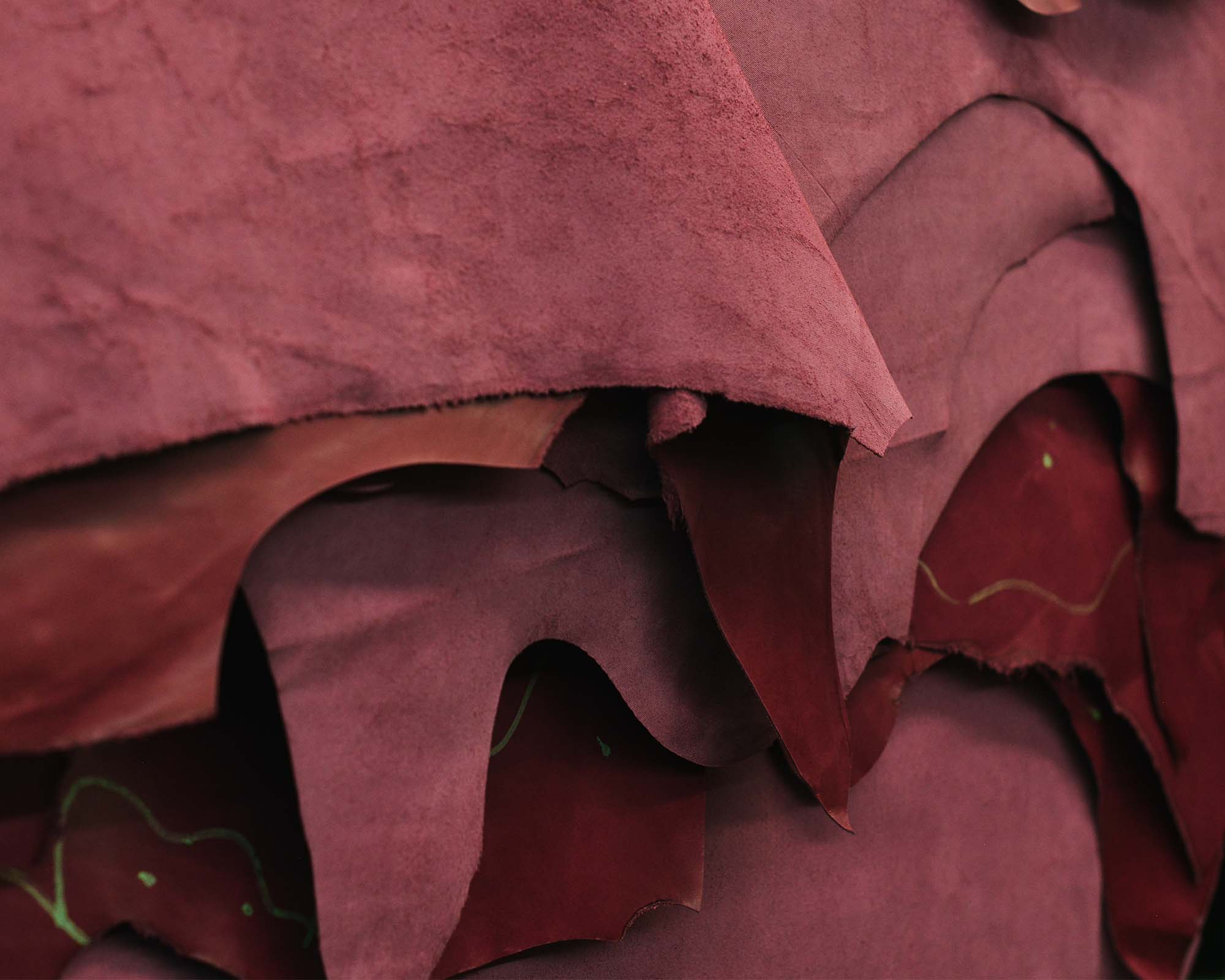Everyday more people are considering where their clothes come from, and at what cost. When wearing animal materials like cow leather or sheepskin, these questions relate to the cost of someone’s life. Materials like fur are much more widely criticized than leather and sheepskin, despite them all being the same thing: animal skins. One of the greatest perceived differences between fur, as compared to leather and sheepskin, is that fur farming is its own industry, whereas skins from cows and sheep are by-products of another industry. But is this accurate? We’ve done the hard work for you to answer this question, and the facts might surprise you.
By-product vs. co-product
As animal rights issues become more important to consumers, brands are marketing their animal products as “ethically sourced”. Much of the time, such brands state that the leather they use comes as a “by-product of the meat industry”. The assumption that follows this one-liner is that in buying something made from a “by-product”, you’re reducing waste and not financially supporting the industry which it comes from.
The term “by-product” means an “incidental or secondary product made in the manufacture or synthesis of something else”. Plastic, like that which is used in plastic shopping bags, started as a by-product of oil refining. The pineapple leaves that are used to create Piñatex, the leather alternative material, are a by-product of fruit farming. At least, they were: until they became profitable.
At a certain point, a “by-product” becomes a “co-product”. The distinction is that co-products are desirable secondary goods.
The distinction is that co-products are desirable secondary goods. These are sold for the sake of profit. Piñatex is a great example of the power of by- to co-products, as the manufacturing of the material has led to pineapple farmers in rural communities having an additional income stream. This is a clear, and positive example of the way in which co-products can act as a sort of “subsidy” for another industry.
What about leather?
Meat and Livestock Australia defines skins to be made into leather as a co-product of the meat industry, alongside other co-products like animal hearts, organs, and hooves. One particularly profitable co-product is foetal blood from unborn calves, who are removed from pregnant cows at slaughter. This co-product fetches up to $700AUD for 500mL as “Foetal Bovine Serum” used in pharmaceuticals—clearly, a source of great income.
The global leather goods market is valued at $95.4 billion USD, and is set to reach $128.61 billion USD by 2022 if nothing changes now. Animal skins are sold and made into leather goods for profit, not for waste reduction. In fact, the RSPCA states that bobby calves slaughtered in the dairy industry have “valuable hides [used] for leather”. This is a clear example of an animal not profiting one industry (as male calves will never produce milk to sell), becoming profitable for another only once killed.
Whether a cow whose skin is turned into a wallet came from the meat or dairy industry, their skin is sold for a profit. It follows that buying leather is financially supporting the slaughter of animals, just as buying meat or dairy is.
The meat, dairy, and leather industries are intrinsically linked. Don Oshman, the publisher of Hidenet, an online leather and hide market report, stated on Business of Fashion that many “European luxury bag makers use calf skin, and people aren’t eating much veal these days… [so] more calves are being raised specifically for their skin… raised in a pen and never [going] outside so its skin is blemish-free”. This aligns with the RSPCA’s statement that here in Australia, “vealer” calves usually grow up on specialist calf-rearing properties in group sheds, where their skins are worth good money.
In Australia, there are supposedly high “animal welfare standards” relating to the legal standard practices and slaughter of animals. The legal standard practices for cows and bulls raised in the meat and dairy industries, so too the leather industry, are horrific, and you can read about the specifics over at PETA. Whether buying meat or leather, these practices are part of that product’s supply chain in Australia (though it is worth noting that the vast majority of cow skins comes from India, China and Brazil, and labelling laws mean that even leather which says “made in Italy”, for example, is likely just “finished” in Italy, the cow being raised and slaughtered elsewhere). Shockingly, these practices (and worse) are standard the world over.
If consumers were to stop buying veal and calfskin products, the dairy industry would lose profit. If people were to stop buying cow skin leather, the meat industry would lose profit. In the same way, more consumption of these products means more profit and more production—just as it does when supporting (or not) fast fashion, synthetic, natural, or organic fibres, and innovative leather alternative materials. What we do or do not personally choose to support has an impact, and so considering where our “dollar vote” goes is important.
If you are also concerned about the impact of animal vs. other leather options on people and the planet, too, we have covered the hidden costs of leather before.
Learn more about sustainable and ethical materials.
Author bio:
Emma Håkansson is the founding director of Collective Fashion Justice, a non-profit dedicated to the creation of a total ethics fashion system. She is an author and writer, with her written work and research on ethics, sustainability, animal rights and fashion being published across Vogue Business, Earth Island Journal, Fashion Journal, and more. Håkansson is also an award-winning film-maker, with her short film Willow and Claude winning Best Documentary at the Fashion Film Festival in Amsterdam. She has consulted on sustainable fashion legislation, worked with brands as they transitioned forward from animal-derived materials, and is based in Melbourne, Australia. Follow her on Instagram and check out her website.
















